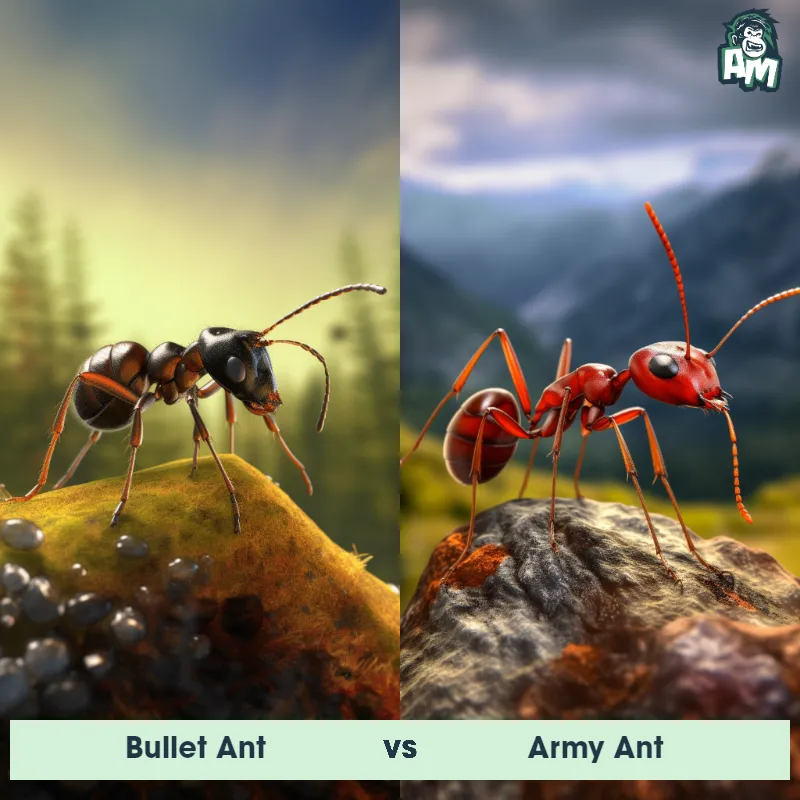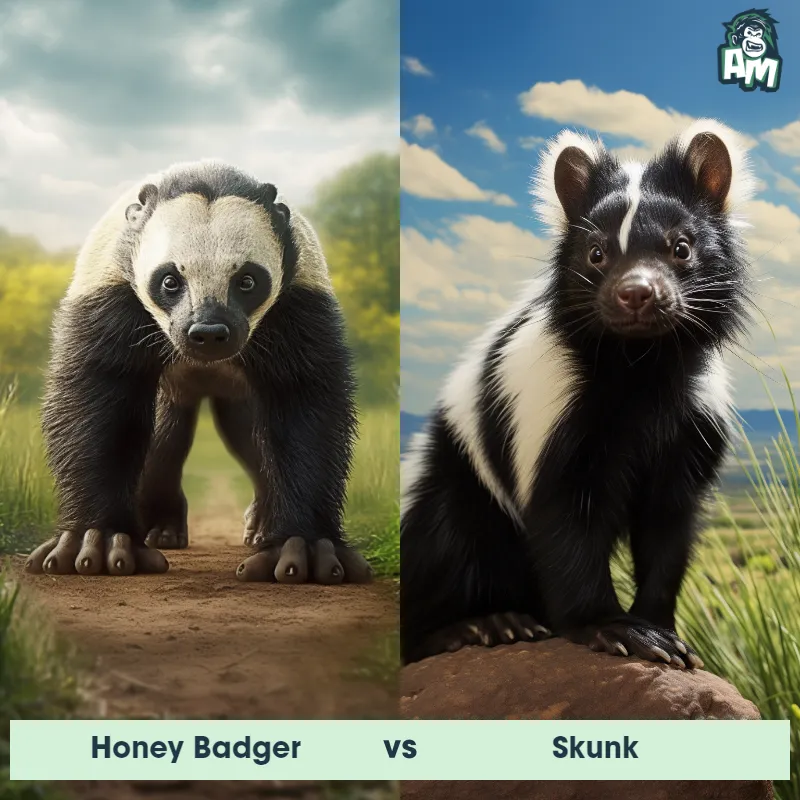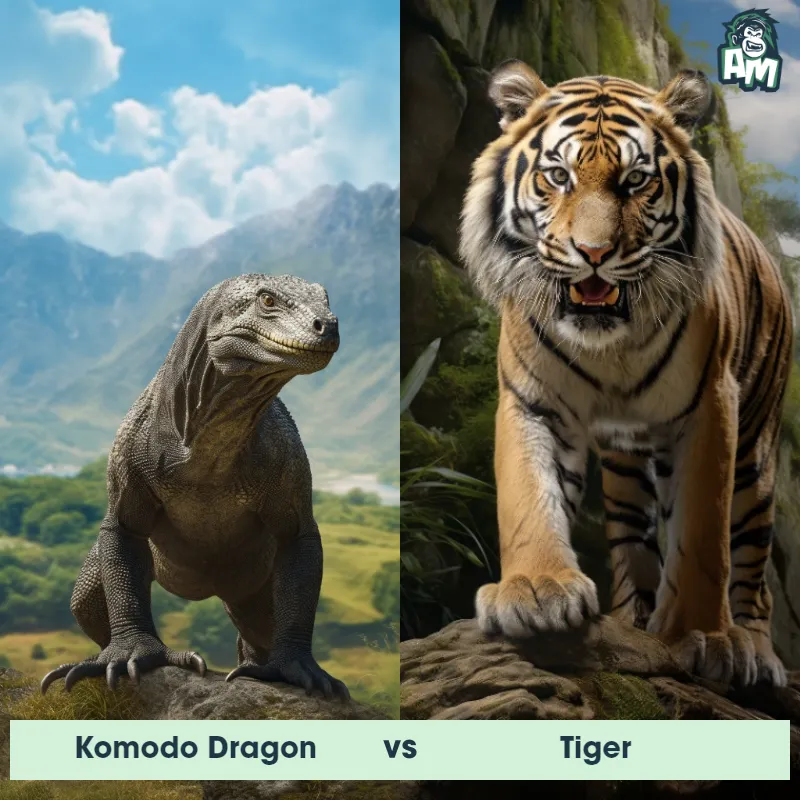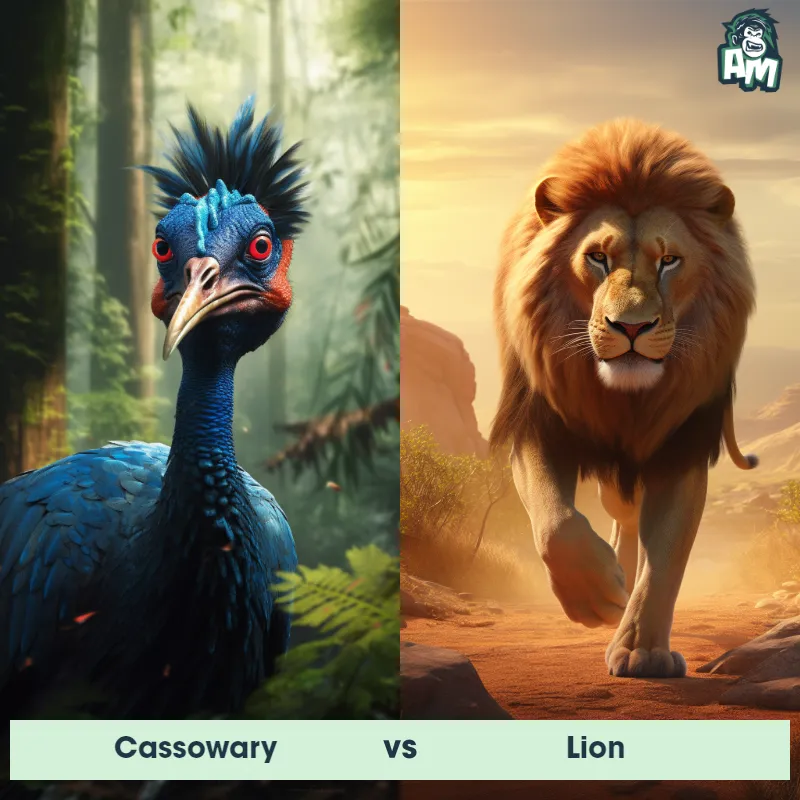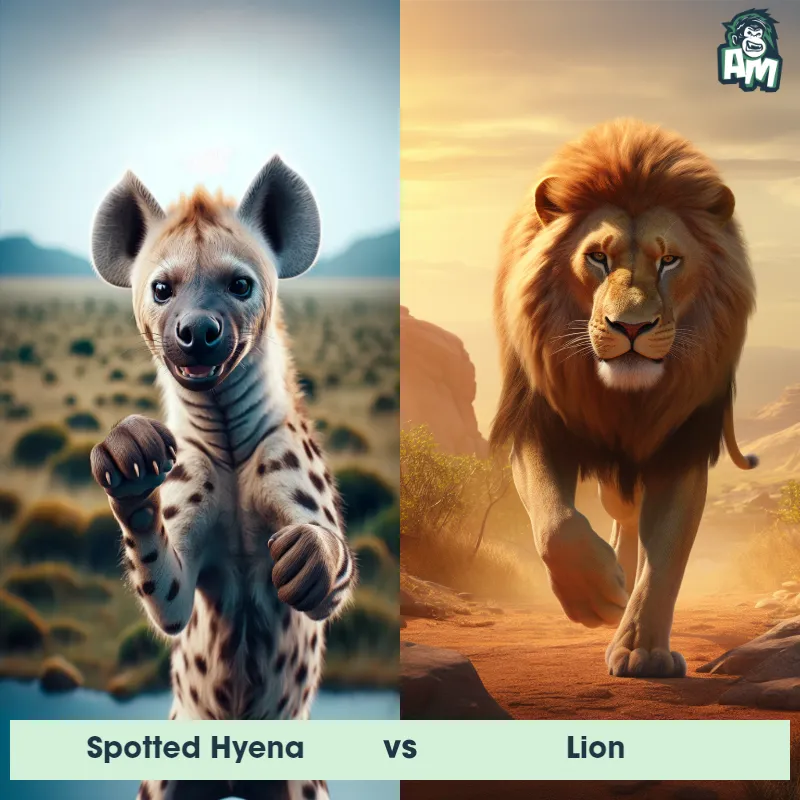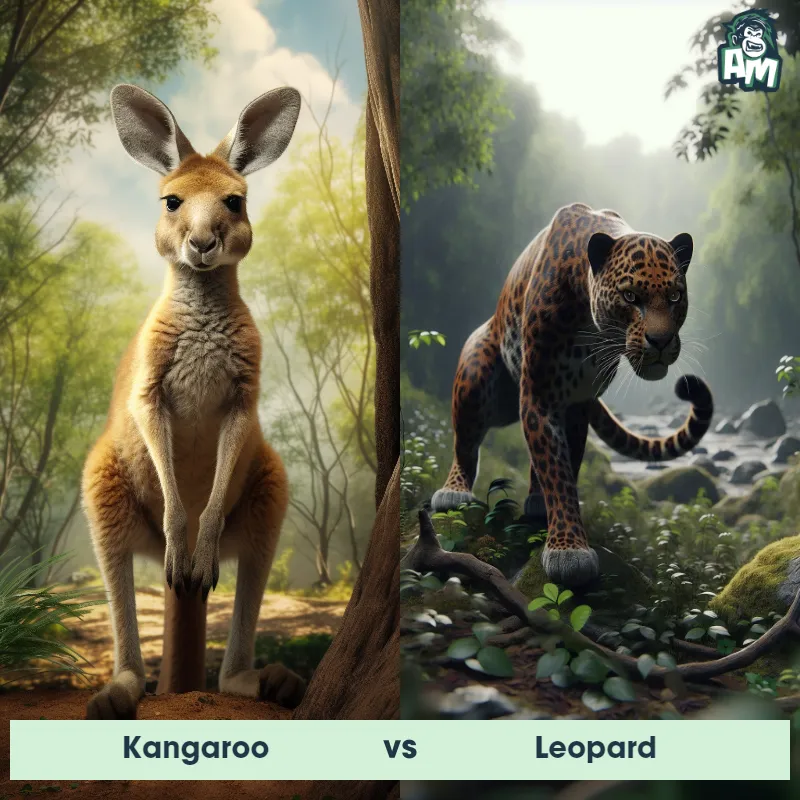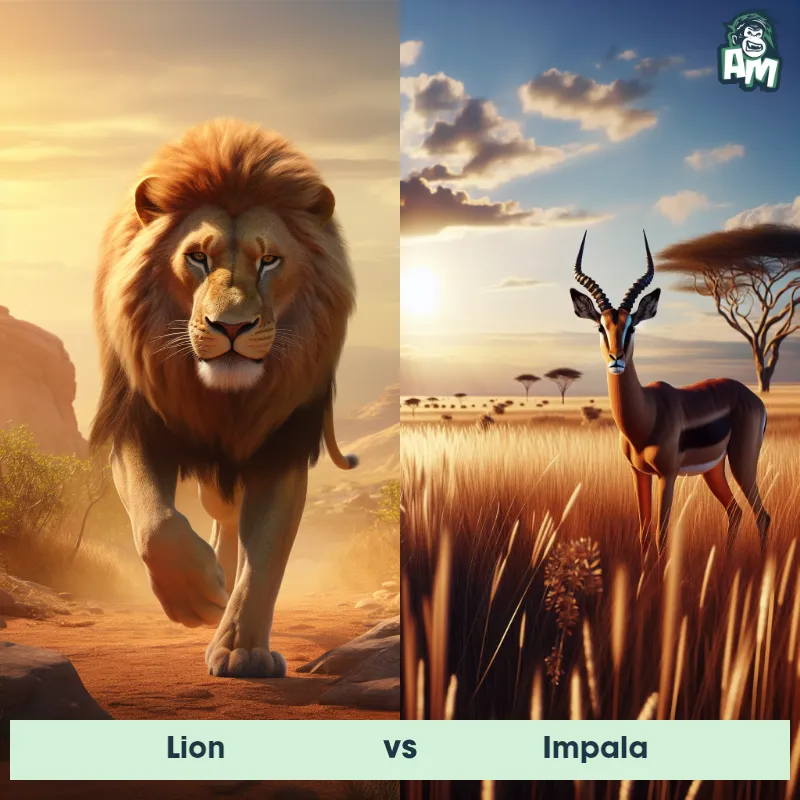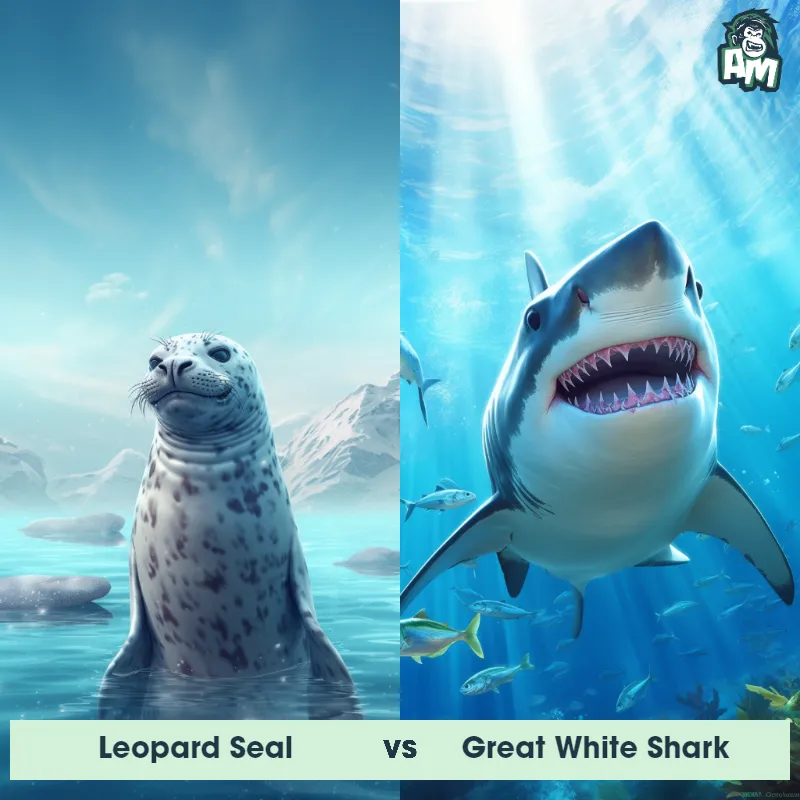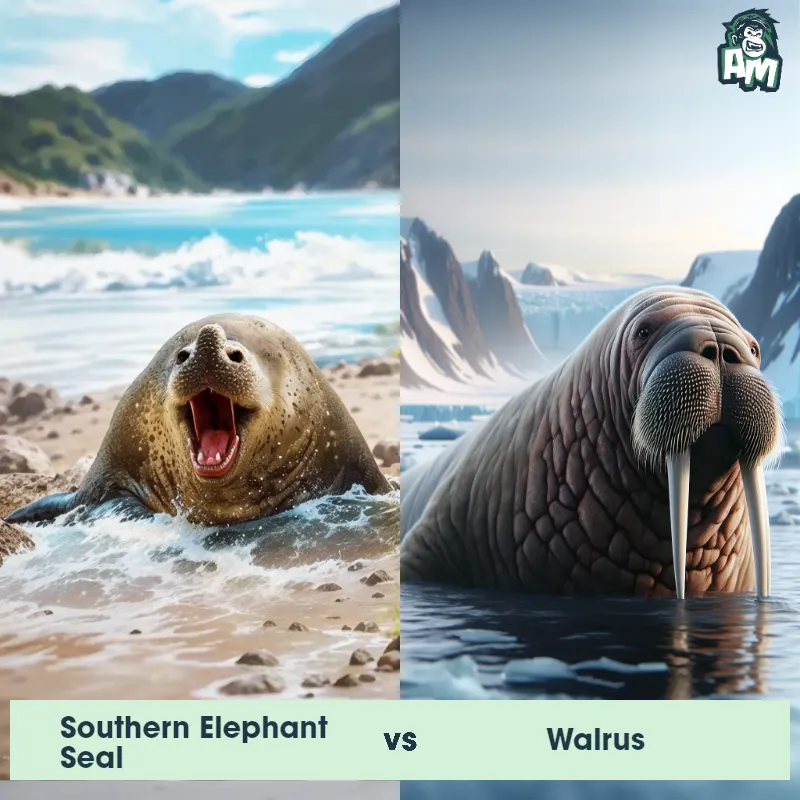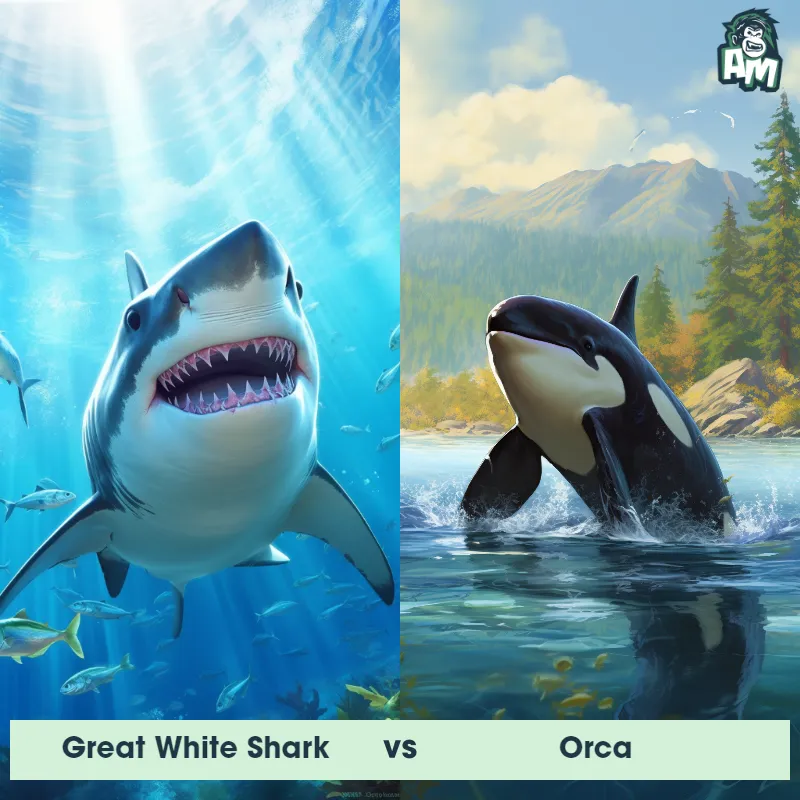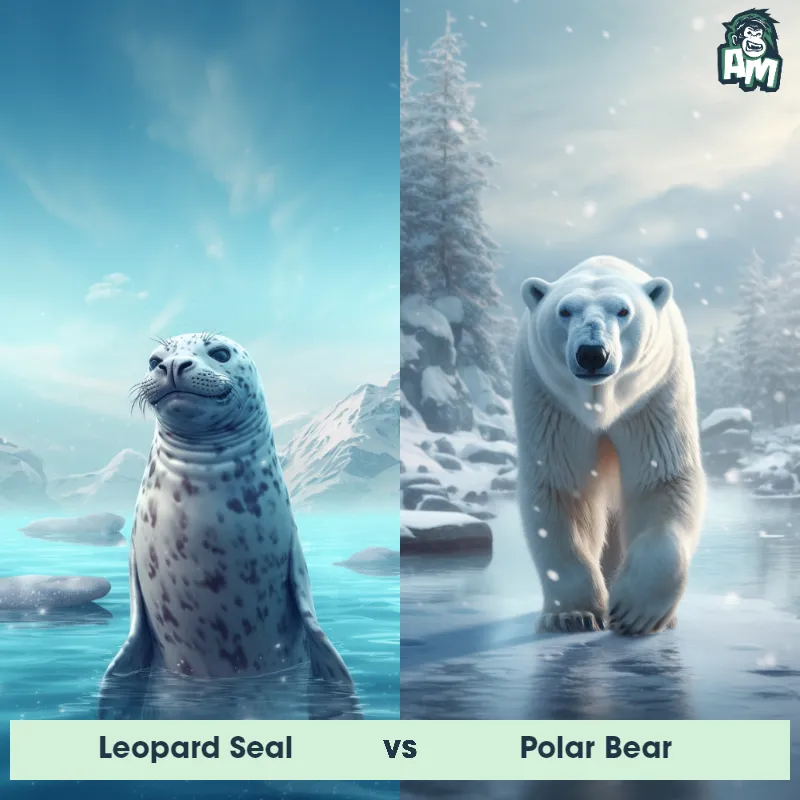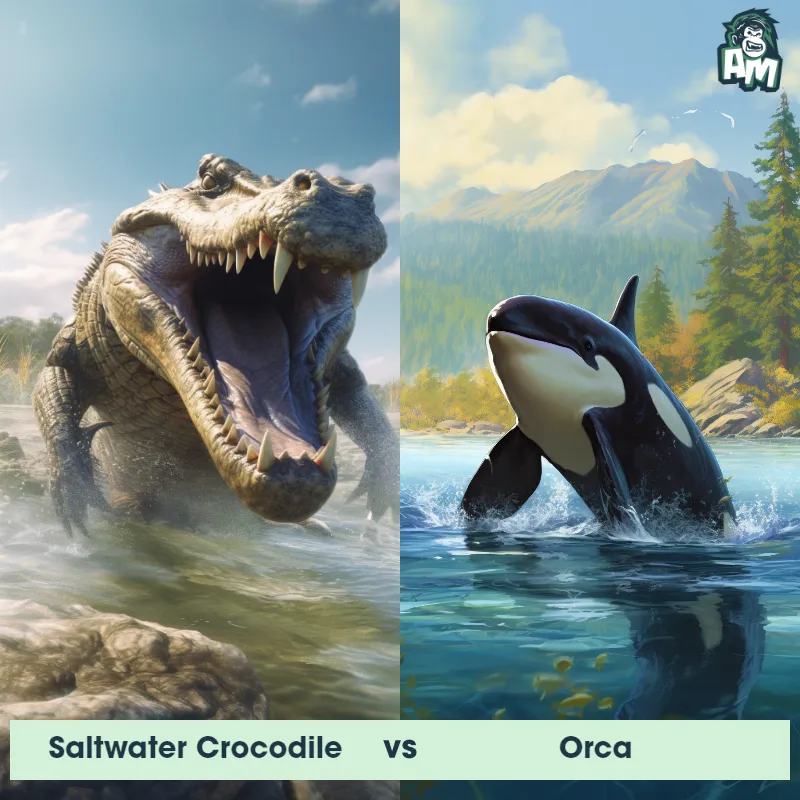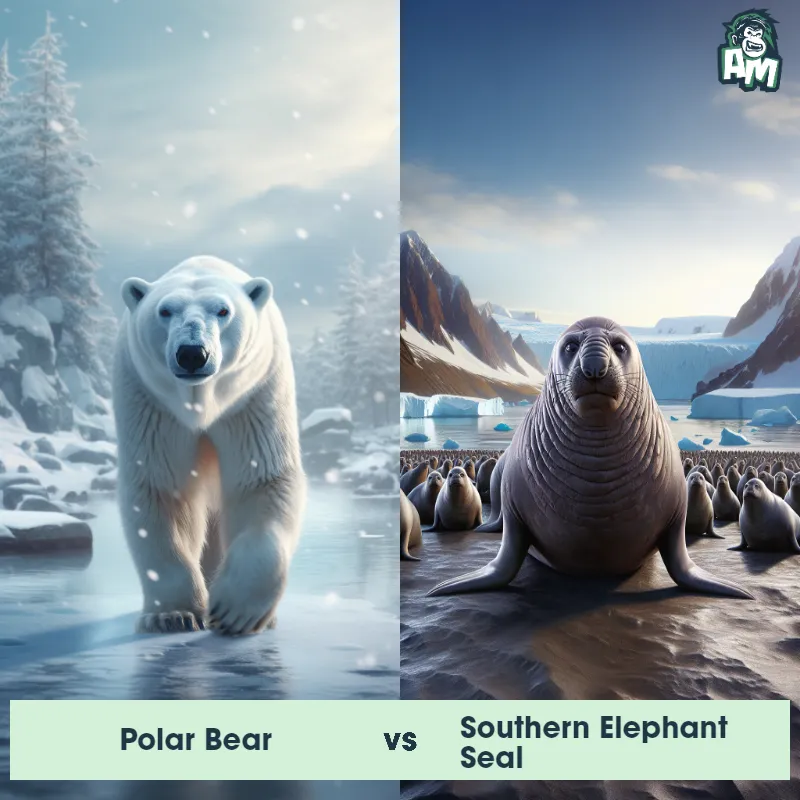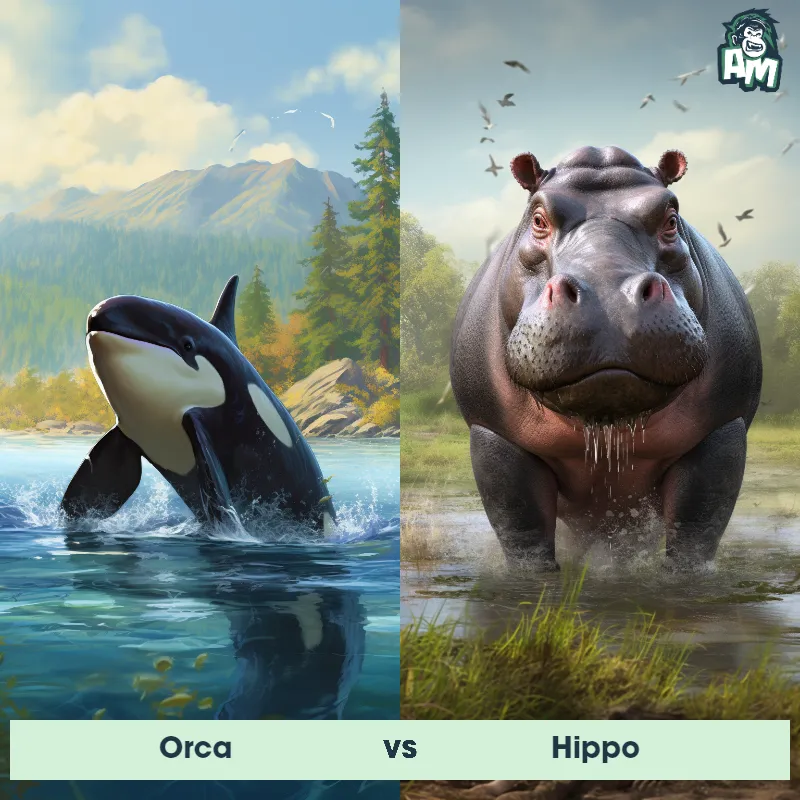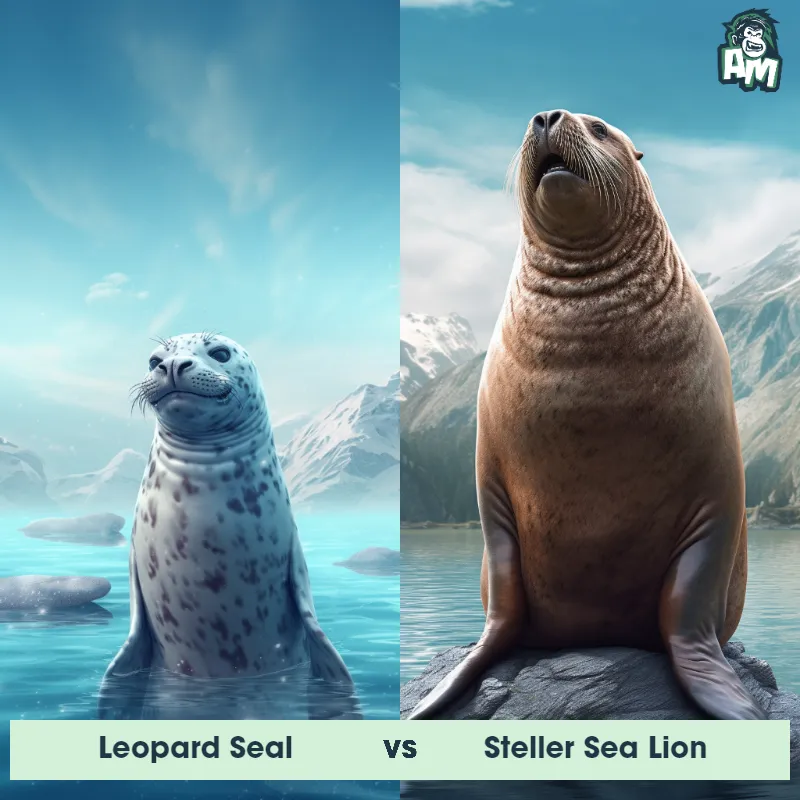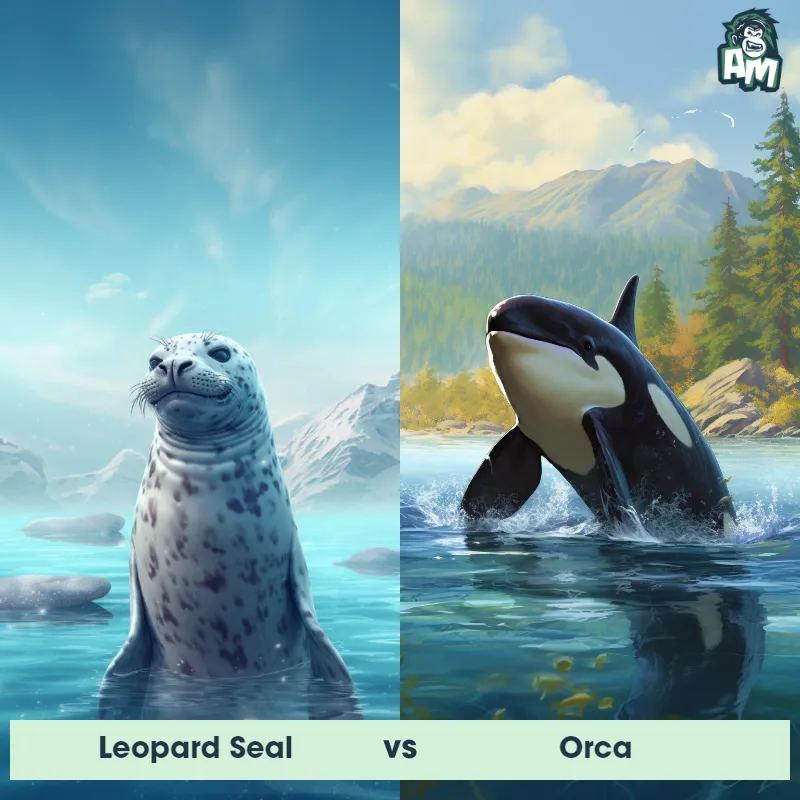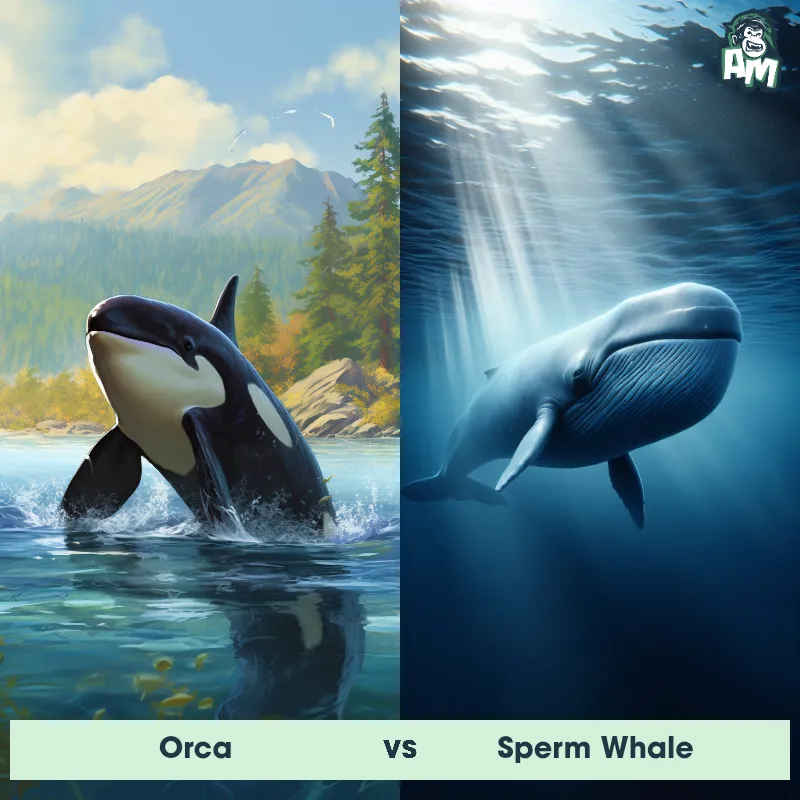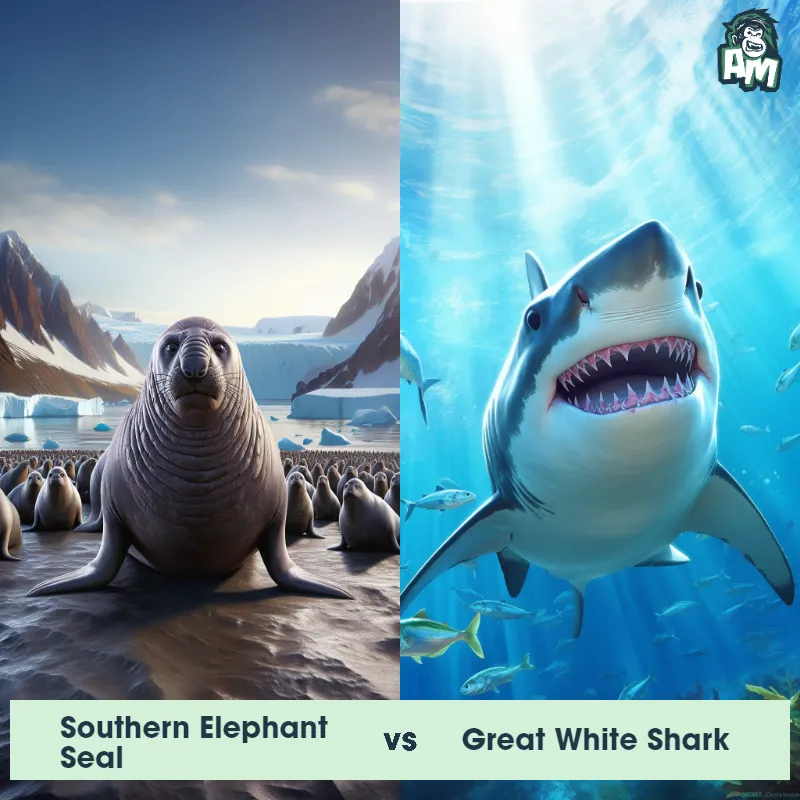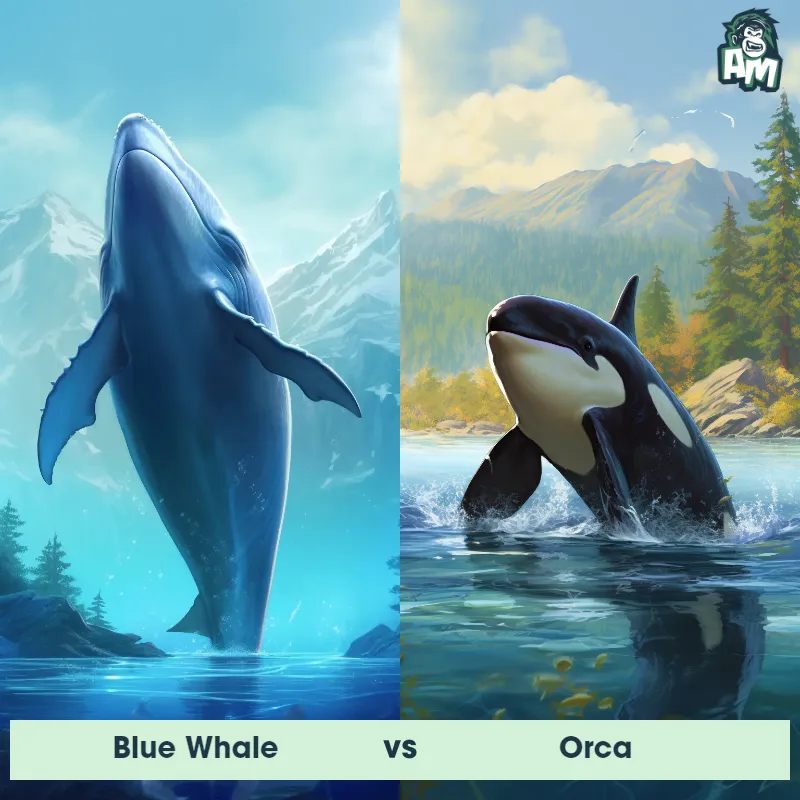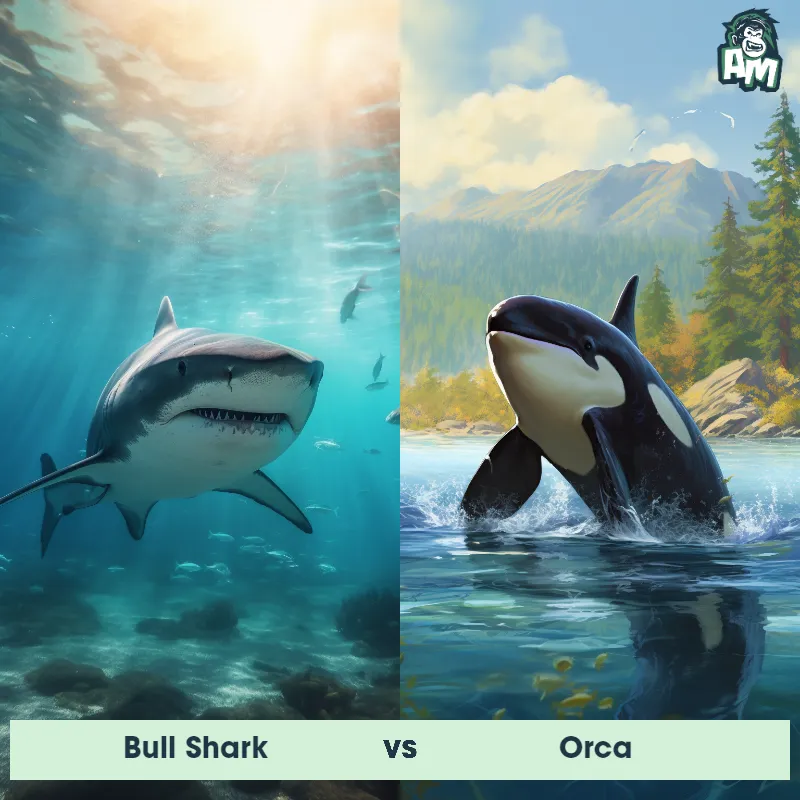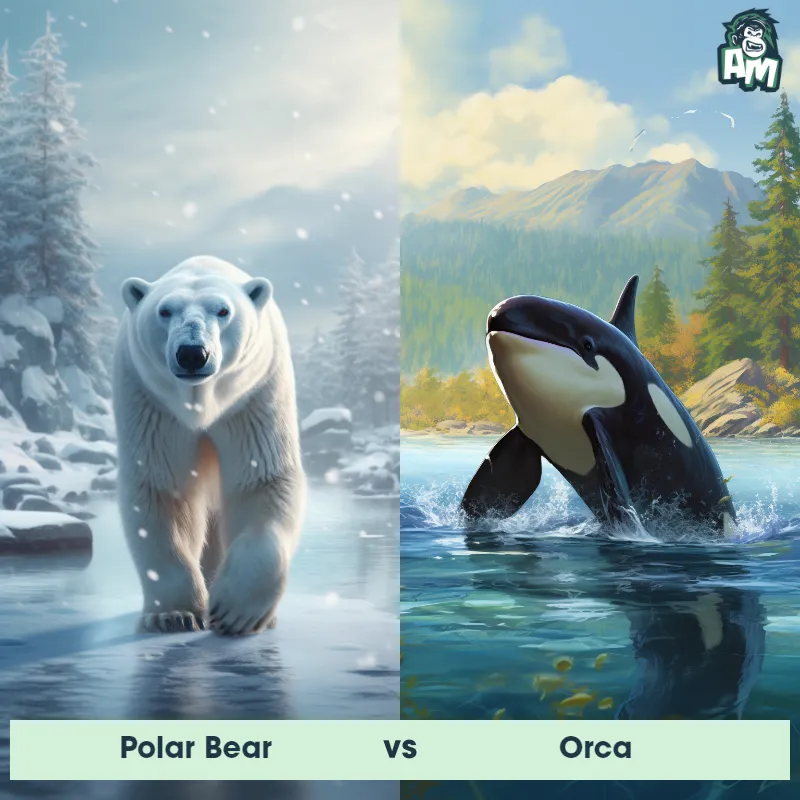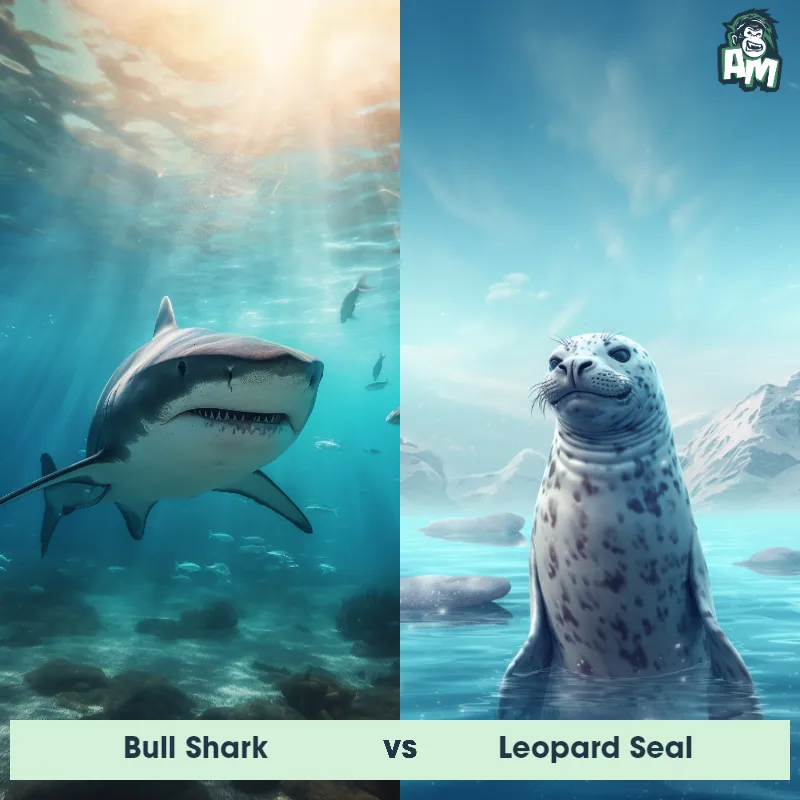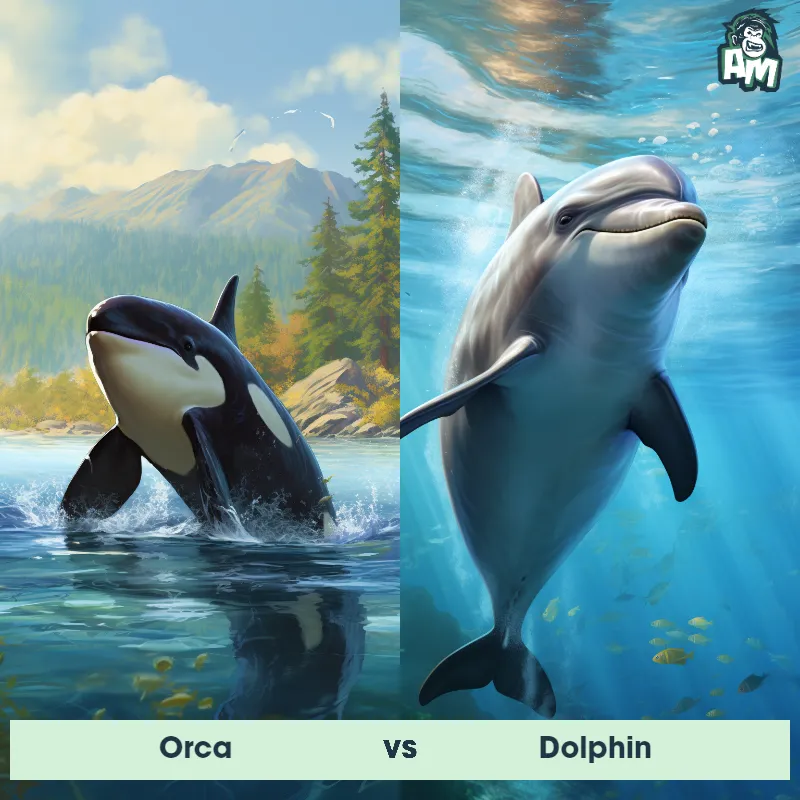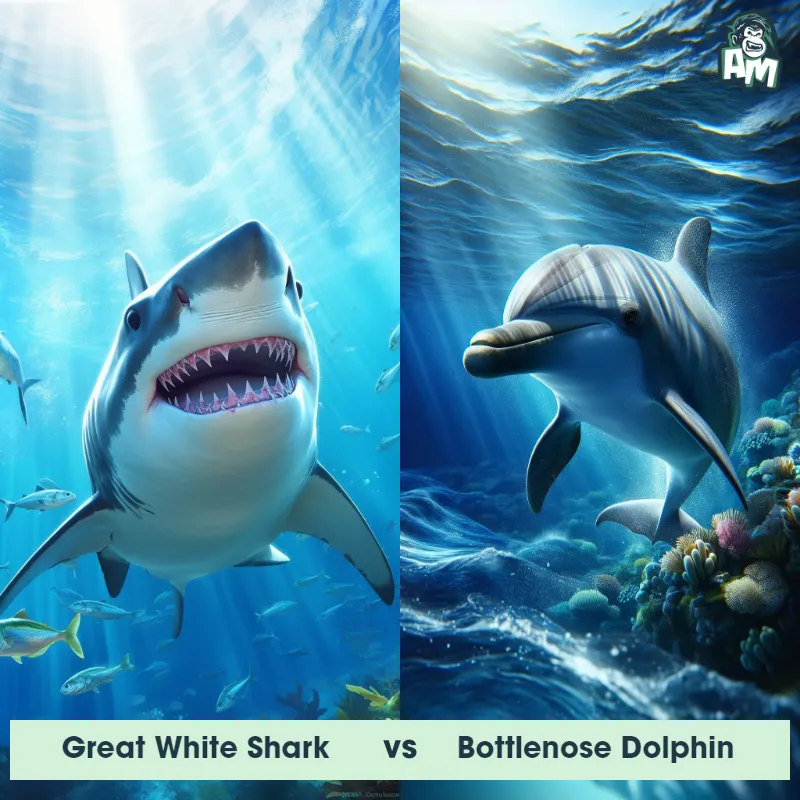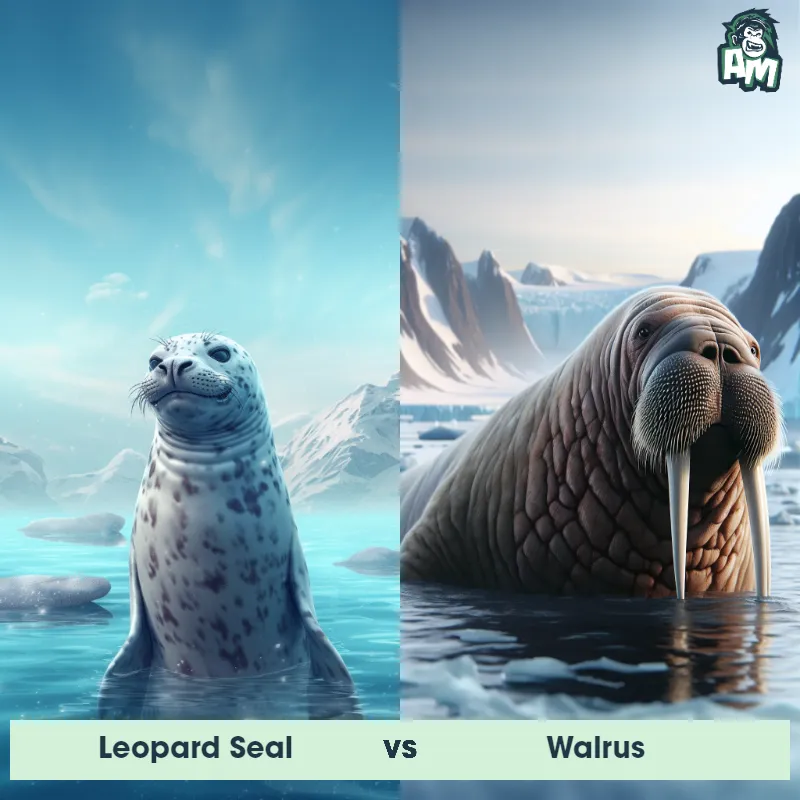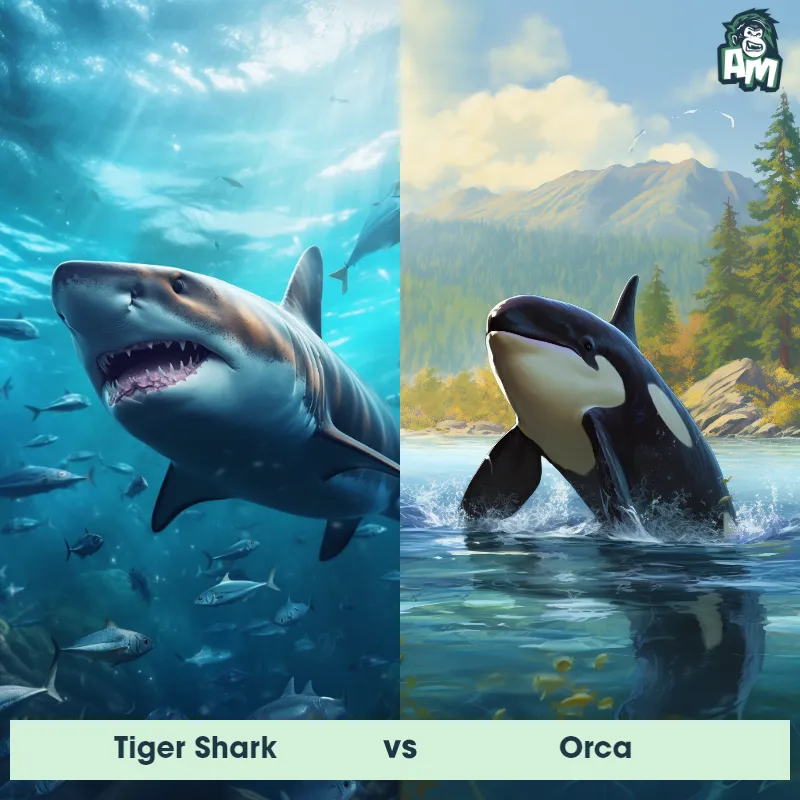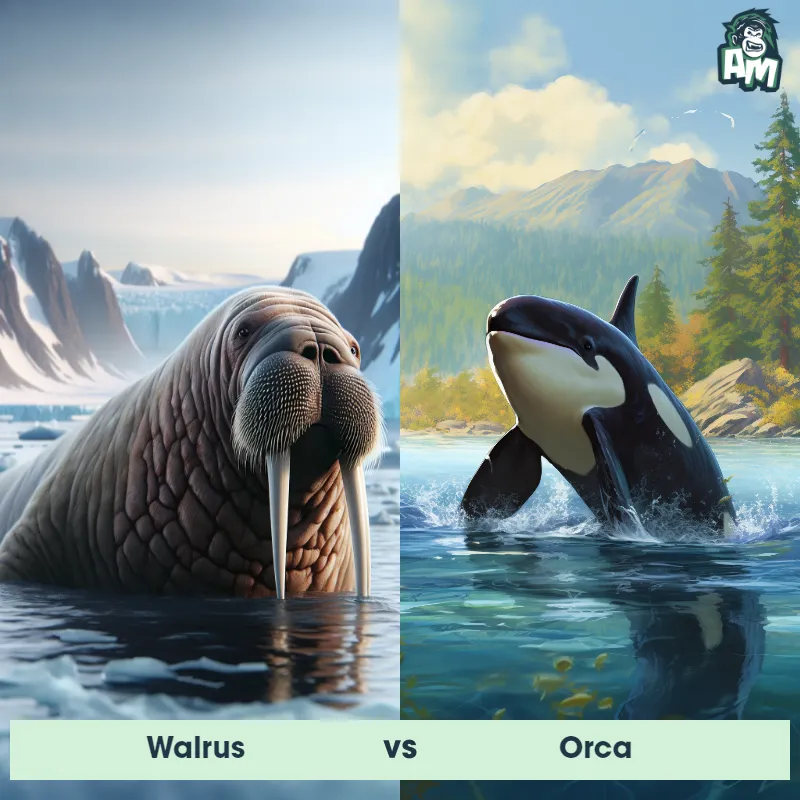Southern Elephant Seal vs OrcaSee Who Wins

Ladies and gentlemen, welcome to this thrilling matchup between the Southern Elephant Seal and the mighty Orca! Both of these incredible creatures are poised and ready for this three-round showdown. It's a battle of strength, agility, and strategy as these fierce contenders prepare to go head-to-head in the ultimate test of dominance. Now, let's dive right into the action!
Contender 1: Southern Elephant Seal
The Southern Elephant Seal, also known as the Mirounga leonina, is the largest seal in the world, with males weighing up to 8,800 pounds and measuring up to 20 feet in length. They have a distinctive trunk-like nose, which is used to amplify their vocalizations during mating season. These seals are known for their impressive diving abilities, with the ability to dive up to 5,000 feet deep and hold their breath for up to two hours.
Fun Fact: Southern Elephant Seals can hold their breath for up to two hours, making them one of the deepest diving mammals in the world.
Contender 2: Orca
The Orca, or killer whale, is a toothed whale belonging to the oceanic dolphin family. Known for their distinctive black-and-white coloration, orcas are among the most powerful predators on Earth. Adult males can grow up to 26 feet long and weigh up to six tons. They have a large dorsal fin, which in males can reach up to 6 feet in height. Orcas are found in oceans all over the world but are most common in the Arctic and the Antarctic. Their diet is diverse, including fish, seals, and even other whales.
Fun Fact: Orcas have a complex social structure, living in tight-knit family groups known as pods, and they are known to exhibit behaviors such as teaching, learning, cooperation, and grieving.
Matchup Stats
| Southern Elephant Seal | Orca | |
|---|---|---|
| Size | Up to 20 feet (6.1 meters) in length | Up to 26 feet long (7.9 meters) |
| Weight | Up to 8,800 pounds (3,992 kilograms) | Up to 6 tons (5,443 kilograms) |
| Speed | Speed: 8 mph (12.87 km/hr) | 35mph (56km/h) |
| Key Strength | Powerful jaws and teeth | Powerful predator with strong jaws and sharp teeth |
| Biggest Weakness | Slow movement on land | Limited mobility on land |
Current Votes
Southern Elephant Seal vs Orca
See Who Wins
View More Matches
Looking For More?
Similar Matches
Scientific Stats
| Southern Elephant Seal | Orca | |
|---|---|---|
| Scientific Name | Mirounga leonina | Orcinus orca |
| Family | Phocidae | Delphinidae |
| Habitat | Coastal areas and islands | Oceans worldwide |
| Geography | Southern Ocean and Antarctica | Global, most common in Arctic and Antarctic |
| Diet | Squid, fish, and krill | Fish, seals, and other whales |
| Lifespan | 14 years - 20 years | 50 years - 80 years |
Key Differences between Southern Elephant Seal and Orca
- Behavior: Southern Elephant Seals are mainly adapted for life on land and can be seen resting ashore in groups, while Orcas are highly skilled marine mammals that are often seen swimming and hunting in pods, displaying cooperative hunting strategies.
- Size: The Southern Elephant Seal is the largest pinniped, with adult males averaging around 16 feet in length and weighing up to 8,800 lbs, while Orcas, also known as killer whales, are much smaller, averaging around 23 to 32 feet in length and weighing about 6 to 11 tons.
- Nose shape: Southern Elephant Seals have a short, trunk-like nose called a proboscis, which is not present in Orcas that have a more streamlined, pointed nose.
- Dorsal Fin: The Southern Elephant Seal lacks a prominent dorsal fin, while Orcas possess a large, prominent, triangular dorsal fin on their backs, which can reach up to 6 feet in height for males.
- Coloration: Southern Elephant Seals have a dark brown to grayish color on their bodies, with sometimes lighter patches on their bellies, whereas Orcas have a distinct black and white color pattern with a white underside and a black back.
- Teeth: Southern Elephant Seals possess large, sharp, protruding upper incisors that resemble tusks, which are absent in Orcas. Orcas have a set of conical, interlocking teeth that are used for grasping and tearing prey.




